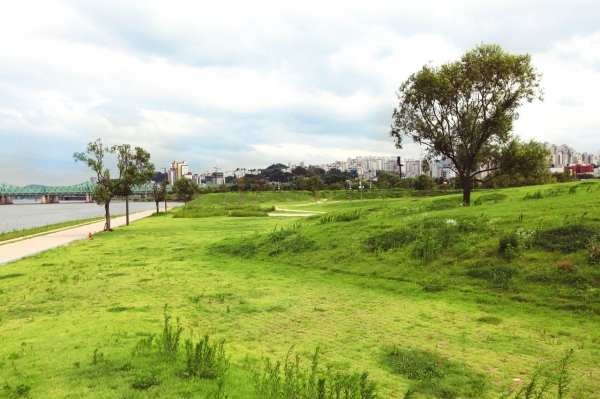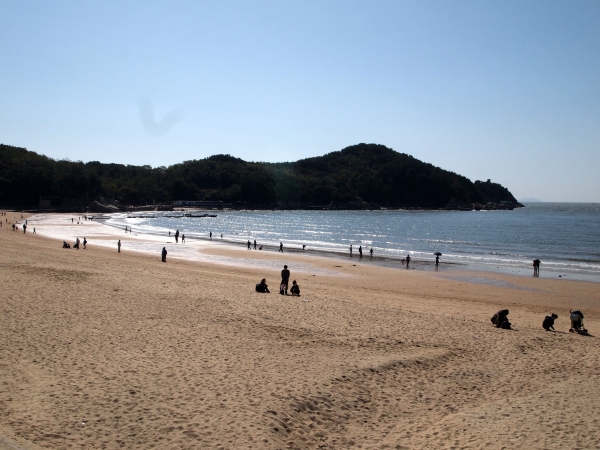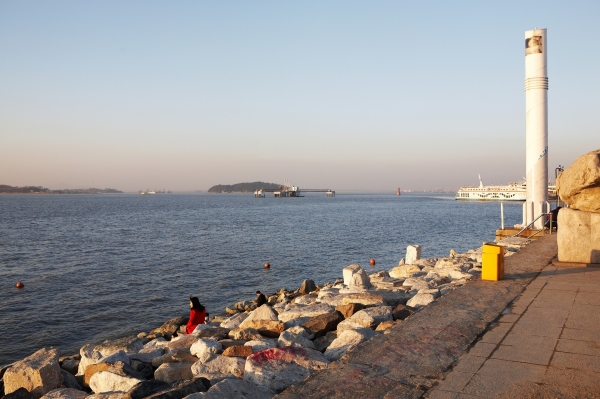- Use a lot of cards in leisure sports (especially golf courses) and rent a car instead of public transportation -
- Consumption expenditure by tourism sector, 90% reduction in 'travel business' and 'tax-free shop' -

COVID-19 has greatly changed the landscape of Koreans traveling in Korea.
According to the analysis of Korea Tourism Data Lab (datalab.visitkorea.or.kr), a tourism-specific big data platform opened by the Korea Tourism Organization (President Ahn Young-bae) on February 17, the number of visitors nationwide in 2020 decreased by 18% on average compared to 2019. However, the number of visitors to hidden tourist attractions, non-face-to-face natural tourist attractions, camping sites, and parks in the Seoul metropolitan area has increased. Besides, spending on tourism has changed significantly from 2019.

■ More than 5% of visitors increased to Yangyang (10%), Miryang (7%), Ongjin (7%), Goheung (6%), Gijang (5%)
According to the analysis of the number of visitors by basic local governments using mobile communication big data (KT), the number of visitors to Jung-gu, Incheon, where Incheon Airport is located, and Ulleung-gun, Gyeongsangbuk-do (-31%) decreased the most. Jung-gu, Seoul (-29%), Seodaemun-gu (-27%), Jongno-gu (-26%), and Jung-gu, Daegu (-26%). However, despite Corona 19, Yangyang-gun, Gangwon-do, saw a 10% increase in the number of visitors compared to 2019, and Ongjin-gun, Incheon, which has many islands, also saw a 7% increase in the number of visitors. Also, Miryang-si (7%), Goheung-gun (6%), and Gijang-gun (5%) in Busan increased, and demand for visits to hidden places, which are recognized as clean tourist destinations, was analyzed.
* Other local governments with an increased number of visitors compared to 2019: 4% in Goseong-gun, Gangwon-do, 4% in Guri-si, Gyeonggi-do, 3% in Gapyeong-gun, Gyeonggi-do, 3% in Anseong-si, Gyeonggi-do, 2% in Namyangju-si, Gyeonggi-do, 2% in Taean county, Chungcheongnam-do, etc.
■ The biggest drop rate is Daegu in March (-57%), and the largest increase rate is Gangwon in May (10%)
By period (at the metropolitan government level), the decline in the number of local visitors was noticeable in March (-36%), September (-28%), and December (-26%), while the biggest decline was in March in Daegu (-57%) and Gyeongsangbuk-do(-44%), April in Jeju (-44%), and August and December in Seoul (-41%). Meanwhile, the largest increase in the number of visitors last year was in Gangwon (10%) in May, and the number of visitors to Gangwon (5%), Jeonnam (8%), Jeonbuk (8%), Gyeongnam (8%) and Gyeongbuk (8%) temporarily increased compared to 2019. Also, December saw a 26% drop in the number of visitors (especially Gangwon-do -28%) compared to 2019, as the number of winter travel specials decreased significantly, such as raising the level of distance and reducing winter festivals.

■ Navigation destination search 'Automobile Theater', 'Camping Site', 'Golf Course' etc.
Non-face-to-face tourist attractions such as 'Casino' and 'Playing Facilities' decrease in population and indoor tourist attractions
According to the analysis of the number of search cases by tourist type using navigation data (Tmap), the number of non-face-to-face travel destinations increased from 2019, including automobile theaters (144%), camping sites (54%), fishing (42%), beach (39%), and golf courses (30%). Meanwhile, casinos (-62%), amusement facilities (-59%), racetracks (-58%), and science museums (-56%), which are densely populated or indoor tourist attractions, saw a significant decrease in the number of searches.
■ Top search destinations 'Yeouido Hangang Park'·'Eulwangni Beach', 'Everland'·' Lotte World' have fallen significantly
Until 2019, Everland and Lotte World ranked first and second side by side, but in 2020, they gave up first and second place at Yeouido Hangang Park and Eulwang-ri Beach, natural tourist destinations. In particular, natural tourist attractions such as parks and the sea accounted for the majority of the top search points in 2020.
■ Spending on tourism, such as travel, duty-free shops, and cultural services has decreased significantly, and spending on golf courses has increased by 18%.
Consumption expenditure in the tourism sector has decreased significantly compared to 2019. In 2020, BC Card users' spending on tourism amounted to -90% in the travel industry, -90% in duty-free shops, and -73% in cultural services such as movie theaters and theaters. Nevertheless, rental car spending rose 57% compared to 2019, while experience-type leisure sports consumption fell only 6% compared to 2019. In particular, in some local governments, including Chungbuk (19%), Jeju (4%), and Gangwon (3%), consumption of leisure sports increased, which was analyzed to have played a significant role in the increase in spending at golf courses.
Spending on leisure sports by type of detail decreased significantly to -61% and -51% on ski resorts in the form of theme parks, but spending on golf courses increased by 18% compared to 2019.
The corporation launched the ‘Korea Tourism Data Lab (datalab.visitkorea.or.kr)’ service on February 17 that timely analyzes and opens tourism big data such as mobile communications, credit cards, and navigation so that the travel industry can quickly identify and respond to rapidly changing travel trends. The Korea Tourism Data Lab provides a tourism big data analysis service that allows users to see the flow of the tourism industry at a glance by utilizing private and public data needed by the industry, such as providing the number of visitors by region a week ago.


